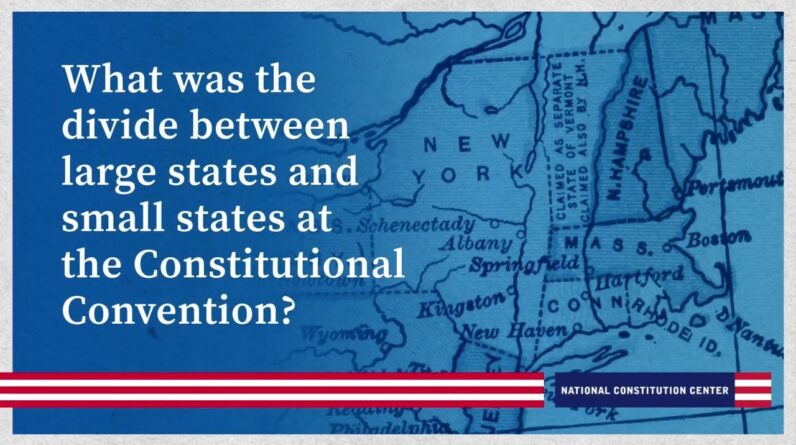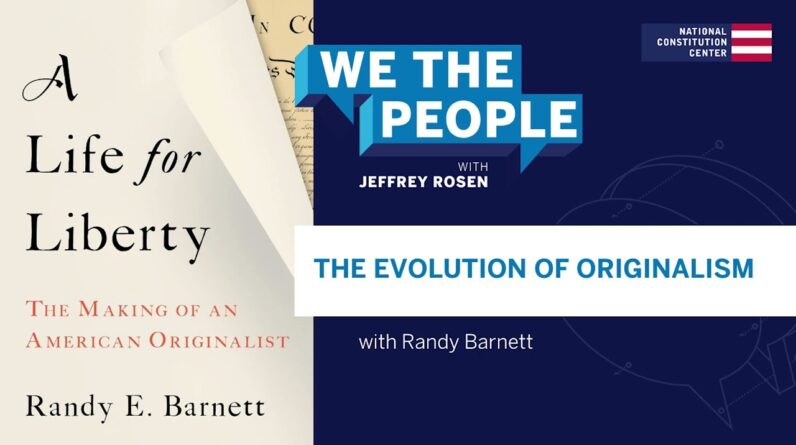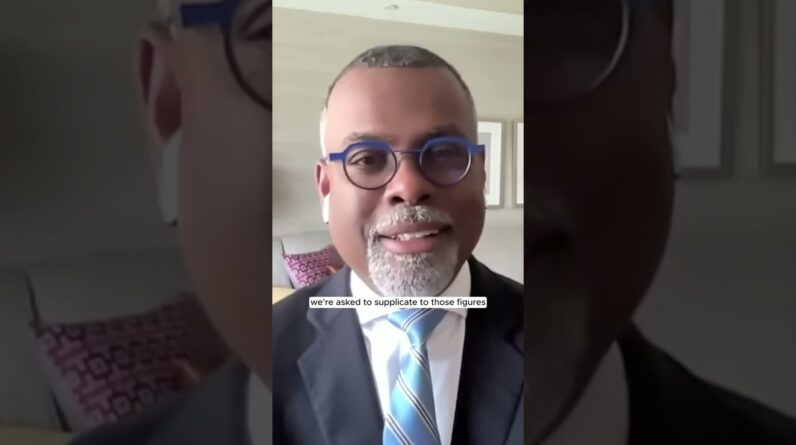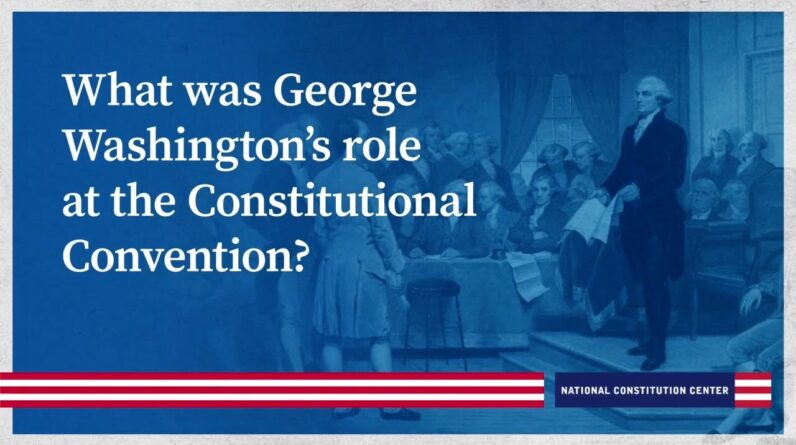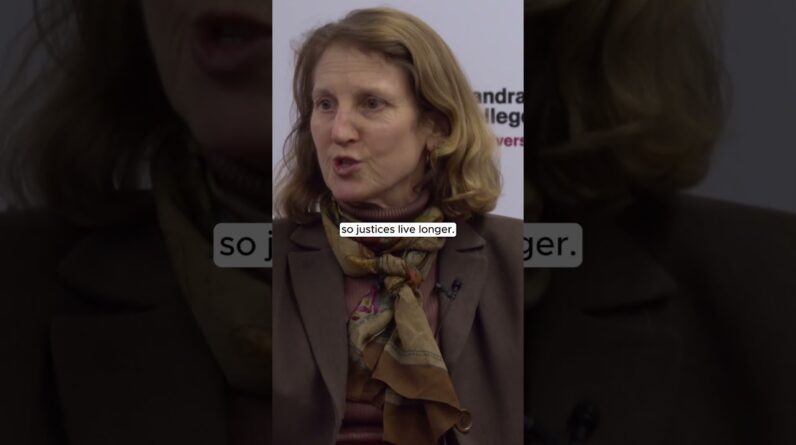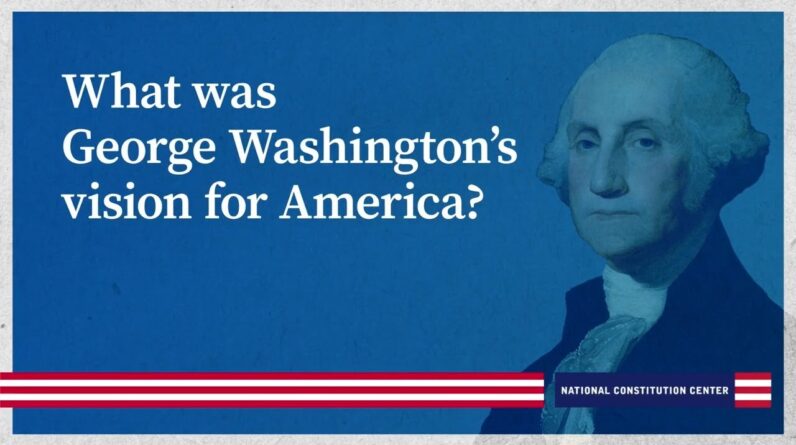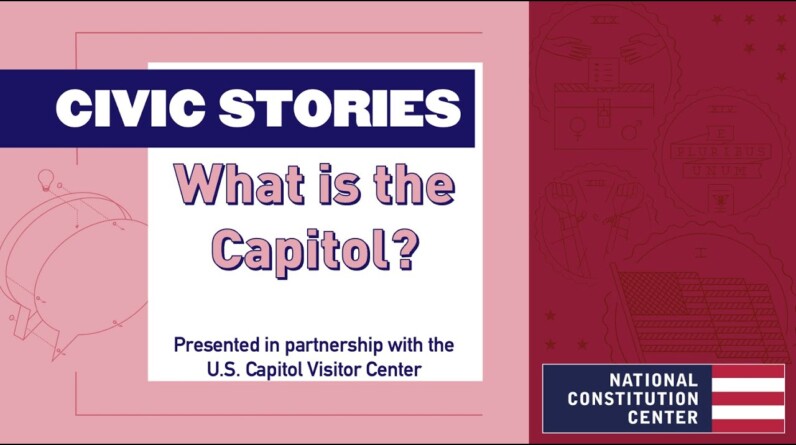
What is the Capitol? Younger learners are invited to join educators from the U.S. Capitol Visitor Center for an interactive program about the function, history, architecture, and art of the Capitol. This program is presented in partnership with the U.S. Capitol Visitor Center.
For more information about U.S. Capitol Visitor Center education programs, activities, and resources, go to https://www.visitthecapitol.gov/
More on this topic: https://constitutioncenter.org/education/classroom-resources-by-topic/article-i
Visit our media library to discover more online classes, podcasts, and Town Hall conversations: https://constitutioncenter.org/news-debate/media-library
Subscribe to the National Constitution Center on YouTube: https://www.youtube.com/user/ConstitutionCenter?sub_confirmation=1
Follow the National Constitution Center on social media!
Facebook: https://www.facebook.com/constitutionctr/
Twitter: https://twitter.com/ConstitutionCtr
Instagram: https://www.instagram.com/constitutionctr/
Sign up for our newsletter: https://visitor.r20.constantcontact.com/manage/optin?v=001isJLcA0NBDU2D_HGg2ohDtUUbfEfE-Gpl9t1—7rRBAsT4f5B7IV2UbsNZFPIVvYFY1ZtLK4zENNfTuda3Z_WJBoefPS8mnvM8KMyfAOq4%3D
Hello everyone and welcome to the National Constitution Center my name is Madison and I'm a member of the center's Education team and I am super excited You excited to welcome you to a very Special edition of Civic stories what is The capital we are with our friends at The US capital visitor center today uh I Am joined by education Specialists Amy Durban and Mary Beth Wagner who have Prepared an amazing presentation and They're going to take us through what Well what is the capital we're going to Look at the art the function the history Of the building it's going to be a lot Of fun if you have questions for our Friends and I hope you do please pop Those into the chat or the Q&A function And I'll make sure that we get to those At the end of the presentation we are Definitely going to save some time so Without further Ado because we have a Lot to do and a lot to learn I'm going To turn it over to our friends at the Capital to go ahead and get started Welcome Mary Beth and welcome Amy super Excited that you are here we are happy To be here I'm going to share my screen So we can get The PowerPoint Rolling hold on one [Music] Second and as Amy is getting our PowerPoint going uh thank you Madison so
Much for the introduction um yeah as she Said my name is Mary Beth Wagner I am an Education specialist um and have worked At the capital for about six years now And um in this role I get to develop and Present educational programs like this One to audiences um special audiences Like all of you so thank you so much we Are very excited to be here today um and At also as Madison said we are going to Talk a little bit about the Capitol Building and not just the building Itself um but also the people who work Here and some of the events that happen Um here in this space so I'm assuming You all recognize the building on the Screen here is the US capital um so we Actually um and if my um friend Amy She's going to also introduce herself Amy if you would like to say a quick Hello hi everybody if there's any issues With the slides that's going to be on me So Mary Beth is going to take us through The first half of the PowerPoint and We're going to hopefully match the Photos to what she's talking about uh Yeah great well thank you Amy um if you Want to go to the next slide um Amy and I both work at the capital Visitor Center which is actually um an Underground area that um allows visitors To come and get ready and get set up to Go on tours of the building um so if you See here we actually have um
Emancipation Hall and this is where we Gather uh groups to be able to go see um What's happening in the capital uh and We also are able to develop educational Programs um in this space as well uh so We're going to talk a little bit more Actually about um who works in the Building besides me and Amy so if we Want to go to the next slide please all Right so does anybody know what we call The people who work in our government That work in the Capital You guys want to share uh either in the Chat so miss Curran's class says Congress absolutely yeah Congress people Yes absolutely and we have two branches Of Congress we have the House of Representatives and the Senate and we're Going to talk a little bit about these Two Chambers and break them down for you Some more Information so we're going to start with The House of Representatives and we're going to show You the area in the building that they Work so this is the Chamber of the House Of Representatives does anybody know how How we get the uh total number of Representatives that we have in this Country what it's based On and to let you know we have 435 Members any guesses how we get that
Number the sentence absolutely Population yeah so so we get the number Of representatives from state population Absolutely so it depends on how many People are living in your particular State now members of Congress they serve Um excuse me House of Representatives They serve twoyear terms so that means Every two years they are up for Reelection so anybody who is 18 and up Is able to vote for the person that they Want to represent them in their District In their state so uh we we Now Understand it's by population if we Could go to the next bullet so in order To run to be a House of Representative Member you have to be 25 years old based On the Constitution and like we said seats are Given by the population of the states Now the person that oversees the work That happens in the House of Representatives is called the speaker of The house which if any of you have been Paying attention to the news you you Might have heard we've had a couple of Interesting things happen with the Speaker of the house we've had some Votes um but we finally have a new one So that's exciting news uh so yeah this Is how um the House of Representatives Is set up now we're going to take a look At a map of the United States and we're Going to take a look
At the uh number of Representatives that Each state has can you all find your State on this Map and if you can go ahead and drop in The chat how many members you have in Your state and I will just say I live in Virginia so Uh 52 yeah 52 in California you guys are coming from California 28 I see some 15 in Ohio yeah So I'm in Virginia and we have 11 uh Representatives so can anybody tell me Also which state has the most Representatives based on this Map we do yeah the folks who said in California yeah California they have 52 members in the House of Representatives uh and yeah it's based On how many people are living in that State can anybody see any states that Have the least Amount of Representatives yep I'm seeing North Dakota South Dakota Alaska Vermont Delaware yeah they only have one uh Person representing them in those states And uh one interesting thing is Alaska Is actually our biggest state by land Mass but it's pretty cold there so they Don't have as many people living there And they only have one representative Yeah great Job we can go to the next slide uh we Also have seven non-voting members in
The house of uh Representatives which Means they are delegates and they are Serving citizens of the United States um They are still able to work with other Members in the House of Representatives They are just not allowed to vote on the Floor of the house which we'll talk a Little bit about um here in the next Slide but um District of Columbia so Washington DC where the capital Bill Building is located um they have a Delegate her name is Eleanor Holmes Norton she's able to work on behalf of The resident of the city but she just is Not able to vote on issues on the floor Um so you can see some of the other Territories here to American Samoa we Have Guam Puerto Rico Norther Mariana Islands and the US Virgin Islands here Go to the next slide all right I said we Were going to talk a little bit about The idea of voting when you hear the Word vote what do you think of what does What comes to your Mind presidents yeah absolutely going to Vote for whoever is going to be President Certainly anything Else Laws Yeah you guys are jumping right ahead Yeah so that's actually what Congress Does here uh in when they're that when They're working is they're going to vote
On uh the different laws that come up on The floor right we're going to talk a Little bit more in depth about the the Process of um how a bill becomes a law But here um in the House of Representatives um they uh vote on Particular issues that come to the floor To see if they want the process of buila Law to keep moving forward so in order To do that um if you want to click the Screen any thank you they have what is Called a voting card and they insert the Card into that little box that you see On the screen and they have three Choices they can select yay and if you Are thinking I'm gonna vote yay on Something what do you think that Means I'm gonna vote yay on this Issue yes absolutely so that means yes They're voting that they um agree with The issue that's on the floor um and Then in the reverse if you're going to Vote Nay what do you think that Means no absolutely yeah that means no They disagree with the issue on the Floor they also have the choice to vote Present which means that they are there They're vot they're there and they're Voting but they're not going to vote one Way or another towards that particular Issue now if you take a look at the Screen there will be some yellow boxes That pop up on the top those are the
Names of all the members of Congress and Next to their names you can either see a Little green Um or a little bit of red now that's Going to show you that it's a green Y and a red n and we talked a little bit Bit about this what do you think the Green is representing towards these um Members of congress's Names yeah it means yes that they're all Voting yay anybody that you see that Their name is listed and there is a Green WI next to their name they have Voted yay on that issue and in the Reverse um any of the red NS next to a Member's name yeah absolutely it's No yeah uh 435 members that's a lot of People so they have to do the electronic Voting like we showed you just because It could take a long time to go through Uh a verbal roll call of their votes so They use an electronic system Uh but if you have any questions about The House of Representatives you can Hold those until the end and we're happy To answer them we're going to talk now About the Senate senate is a little bit Different uh as you can see actually in This picture the room looks a little bit Smaller and that's because we have a 100 Senators so if we have a 100 Senators and we have 50 states how how Many senators do you think that uh each
State has and I'm sorry for making you Do math so early in the morning but yeah Two absolutely you guys are Constitutional Scholars yes each state Has two senators they have a little bit Longer um terms and they serve six years So every six years they are up for Reelection anybody um over 18 is able to Vote in their senator in their State and Every state like we said has two yeah Absolutely uh to be a senator you have To be 30 years old so House of Representatives was 25 Senate is 30 and then like yeah like we said every State has two it's equal and then the Person that over sees the work in the Senate is actually the vice president so The vice president has two offices here In the Capitol Building the president actually has to Be invited by the way to come to the Capital um he can't just walk in that's One of my favorite fun facts um all Right so if we take a look at this map You'll actually see what we already Talked about uh those folks in Maryland That are visiting us how many senators Do you Have the folks in California how many Senators do you Have yeah Alaska who had only one Representative how many do they Have yes absolutely every state has two Senators so it is equal um in the Senate
Great if we can go to the next slide so Voting in the Senate is a little bit Different there are a hundred Senators So um what they do they don't do Electronic voting um that person that You see highlighted there that is the Legislative Clerk and that person is Going to actually be reading out the Names of all the Senators and asking for A verbal vote so they're going to either Say yay or nay when their name is called Uh do do any of you have role in school Do your teachers call Rooll if you are uh at school yeah so Sometimes your teacher will call out all Of your names to see if you're there It's very similar except they're calling Out their names for their vote so They'll call out their names for um yay Or nay and you'll see actually a closeup Of how they Tally that here um you can see the first Senator in this case it's ashurst that Person voted yay so the legislative Clerk is going to mark That's the first Yay and then Bayard uh the next Senator Is the first nay so that's how they're Going to tally all of those Votes and with that Amy is going to take It over and she's going to talk a little Bit about how we get Laws great thanks Mary Beth so um as Mar Beth was saying uh they do have Different voting systems and so now
We're going to be talking about well What exactly is it that they're voting On how are they voting um so how are Laws Made it's kind of a lengthy process I'm Sure a lot of you might know where it Starts but you got to start with an idea Uh so this is actually just showing you HR resolution one so it's originating in The house this uh photo at least um you Can see actually the person's put put it Into a box there and it's um nicknamed The hopper so they have put their bill Idea into the hopper and the bill then Gets um introduced onto the floor um and This would be in either chamber so for This example even though it looks like a Resolution from the house we're gonna Actually be kind of following it through The the Senate um it's going to get assigned to A committee um a lot of if you guys ever Like worked in groups maybe to like Break down a problem in class um or Maybe you have a group project this is Kind of like that so it's going to be um A smaller group of people within the Whole uh like the whole chamber are Going to get that bill and they're going To they're going to read it they're Going to add some amendments to it maybe They'll make some changes you can see an Example here um it's a bit historic but You can see some words are crossed out
You can see some sentences that are Written over the original text um so They are marking up this this bill in Committee okay so it's gotten its Committee assignment they've made their Changes it's going to go to the floor And we know that this is the Senate um Not only because of uh the image but Also um when Mary Beth is telling you About how they vote in the Senate like You can see that roll call sheet right There okay so they're discussing the Bill on the floor of the Senate they got debate maybe somebody Has questions maybe a senator wants to Change something um you can make an Amendment um on the floor in the Senate uh they take a Vote tada passes the Senate so it has to Go to the other chamber and work its way Through the House of Representatives if A bill originates in the house and Passes it has to go to the Senate if it Originates in the Senate and passes it's Going to have to go to the house because Both Chambers have to pass that bill Okay but it's not the final stop if both Chambers have passed the bill then they Got to send it to somebody else and that Person's going to be the president so he Is the head of the executive branch um And you can see here is an example of Lyndon Bane Johnson signing a bill into Law now it seems like a fairly
Straightforward process about five Overarching steps here um it's not Always as cut and dry there's lots of Debates in committee there's lots of Debates on the floor um if the bill is Not exactly verbatim in one chamber they Have to form another committee to work Out the language so it can be a slightly Tricky process we do have an example to Show you though um our most recent Federal holiday is juneth this bill Actually is very fast-tracked um through Both Chambers if you can look at the Dates was introduced in the Senate on February 25th 2021 it was sent to the Judiciary Committee that committee Passed it unanimously so that means Everybody agreed to it on June 15 2021 But you'll notice there introduced in February approved by the committee in June um the full Senate uh voted that Same day to pass it so then it got sent To the House of Representatives you'll Notice the next day um they debated for An hour on the floor and remember There's 435 members in the house so for Them to only debate for an hour is Pretty impressive um then it passes the House that same day and then the next Day uh the president signs it into law So again there's going to be some lag Time between when a bill is introduced And if it becomes a law you can see Right here
Um so we're talking about Congress today That's the legislative branch can Anybody name the other two branches that You see represented here on the Screen and you can put those in the Chat right we are at the capital so Legislative yep judicial and executive Well done yeah we've got the executive That's where the president is going to Work and live and then right across the Street from us as Mary Beth mentioned we Have the Supreme Court uh some fun facts that you might Learn later on the virtual tour if You're sticking around for that is that The Supreme Court actually met here in The capital um for over a hundred Years okay so again as we mentioned in That bill to law process uh even though Congress introduces the laws they don't Do everything um not everything kind of Originates in Congress they have to all Work together so you know know congress Makes the law uh the White House the Executive department they enforce the Law remember they've got a cabinet so You can different department heads are Going to help enforce that law and the Supreme Court has um judicial review so Maybe somebody says that like hey like This is infringing on a right or like This doesn't match up with like my Constitutional you know rights then the Court's going to step in and say hm
Let's review this and let's see if it Actually um is okay or is not okay you Can also see kind of that checks and Balances again too is that uh Congress Um the Senate specifically for this Example they approve nominations from The executive branch and they also sign Treaties and they approve the Nominations to the Supreme Court um this the executive Cano Legislation they nominate Judges and again you get that judicial Review from the Supreme Court other things that happen here at The capital so Congress doesn't just Make laws um they also invite the President every year to give a State of The Union Address remember Mary Beth was Saying that the president can't just Like show up here randomly they have to Be invited they have to be invited by Congress to give a message on the State Of the Union so that happens usually Every year um and you can see a couple Of examples here um of some uh Presidential State of the Union Messages we also have foreign leaders Who come and visit you might see in the News a lot that a prime minister or a President um or even just like um a High-ranking government official from Another country might come and visit Washington DC and they might visit at The White House but they also were going
To visit Congress and as you can see in These two images here we had the President of Ukraine come and visit in 2022 and um about 30 years ago we also Had um the former Queen of England come And visit so we've had um people from Other countries come and address Congress for over 200 years uh the first Foreign official to actually address Congress um not in an official capacity But he still is recognized it's probably Something that you all have learned About during your studies of the American Revolution uh but Lafayette is Actually going to be the first foreign Official to address um Congress as a Whole and then again just to show you The interplay between the three branches Of government the executive is going to Have their um presidential inaugurations Here um on the grounds of the capital When you think about the capital it is The people's house for a reason and so It's a really interesting blend to see The executive and the judicial um at the Legislative branch here because again The swearing in of the president is Going to be done um by the Chief Justice Of the Supreme Court so you see all Three of those branches working together Here at the capital every four Years um with the good we also have the Sad so um here at the capital as well we Have two different types of Ceremonies
When people have passed away um and it Is at the discretion of Congress so both Chambers would have to approve um if Somebody is going to be lying in state And that is going to be for government Officials and members of the military uh So John McCain's lying in state here in The Rotunda was in 2018 and also private Citizens if you um are a private citizen Who has done a world of good or made a Difference um like Rosa Parks did when She passed away Congress both Chambers Approved her lying in honor and the Difference between State and honor is Literally government official military Member for state and then private Citizen for lying in Honor okay um if you were ever able to Come and see us in person at the capital We have over 5,000 plus different types of artwork All through the capital um some are in Public areas and some you need to be on Specialty tours for and some even Mary Beth and I haven't been able to see Because they've been in private offices Or Committee hearing rooms um but we Have a lot of really interesting artwork Um there are portraits of speakers every Speaker gets a portrait every vice President remember they are the President of the Senate they get a bust Made of themselves um and then we have a Really really amazing collection it's
Called The National statuary hog Collection and each state gets two Statues that they um that can show People who have made a difference in Their state and they can be um basically Gifted to Congress um for display and Recognition of the person's um Achievements for their state the only Thing is is that the people have to have Been already passed away they can't be Living figures um and each state Legislature has to approve who it is and The state has to pay for it but then They gift it to Congress Um and that statue is displayed in um All parts of the capital so when you Come into the visitor center uh you Would see statues when you go into the Crypt I highly recommend if you haven't Already signed up for this afternoon's Virtual tour you will see more State Statues um here is actually the Unveiling of Chief Standing Bear he is One of the two statues from Nebraska fun Thing about this is that each state is Allowed to basically recall their statue After about 10 years if they decide that They want to um add a different person Um so Nebraska actually changed out Their second statue this past year so Will Cather is now their second statue Um it's fascinating uh we also have a Lot of uh statue histories that you can Read online but because there are 50
States and every state gets two there Are hundred statues in the collection um But right now a lot of states are kind Of in the process of changing those out But there's a lot of different art that You can see around the capital as Well and then finally you guys so if you Are ever in DC uh you don't need to have Like an advanced ticket it's not there's No admission you can come in to tour the Capital there are tours every day Monday Through Saturday um but we also have a Really great um exhibit space and you Can see more of the things that Mary Beth and I had talked about um in that Exhibit space as well and so that is the End of our PowerPoint that was amazing thank you so Much let me let's put everybody back on Screen green here that was awesome thank You so much I'm like aggressively taking Notes of cool fun facts that I'm Learning this is so fun um thank you Both so much for presenting all of that Amazing information um I'm going to just Kind of pause the recording here
